Jingyun Jia
Feature Decoupling in Self-supervised Representation Learning for Open Set Recognition
Sep 28, 2022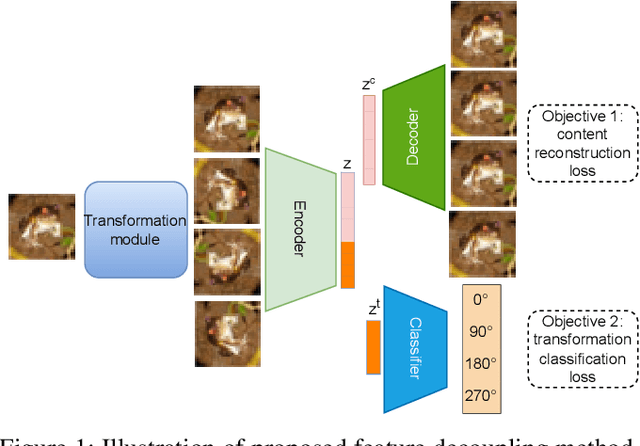


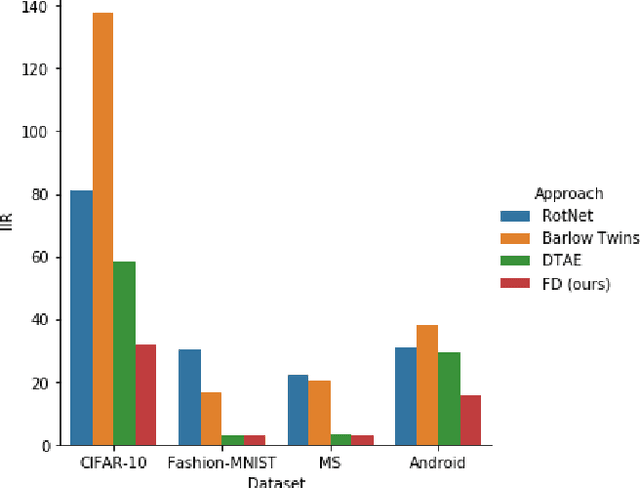
Abstract:Assuming unknown classes could be present during classification, the open set recognition (OSR) task aims to classify an instance into a known class or reject it as unknown. In this paper, we use a two-stage training strategy for the OSR problems. In the first stage, we introduce a self-supervised feature decoupling method that finds the content features of the input samples from the known classes. Specifically, our feature decoupling approach learns a representation that can be split into content features and transformation features. In the second stage, we fine-tune the content features with the class labels. The fine-tuned content features are then used for the OSR problems. Moreover, we consider an unsupervised OSR scenario, where we cluster the content features learned from the first stage. To measure representation quality, we introduce intra-inter ratio (IIR). Our experimental results indicate that our proposed self-supervised approach outperforms others in image and malware OSR problems. Also, our analyses indicate that IIR is correlated with OSR performance.
Representation learning with function call graph transformations for malware open set recognition
May 13, 2022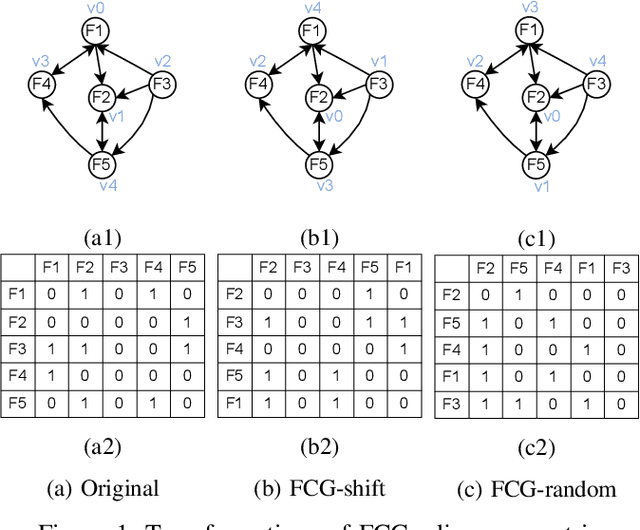
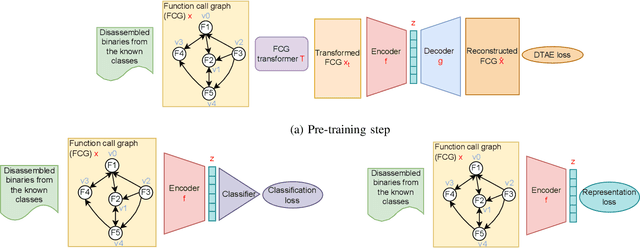

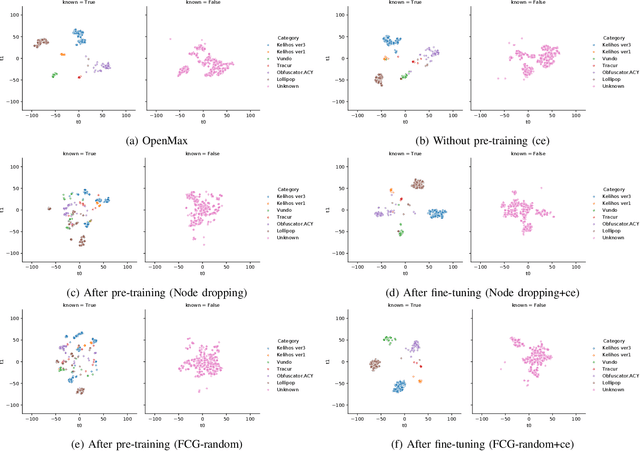
Abstract:Open set recognition (OSR) problem has been a challenge in many machine learning (ML) applications, such as security. As new/unknown malware families occur regularly, it is difficult to exhaust samples that cover all the classes for the training process in ML systems. An advanced malware classification system should classify the known classes correctly while sensitive to the unknown class. In this paper, we introduce a self-supervised pre-training approach for the OSR problem in malware classification. We propose two transformations for the function call graph (FCG) based malware representations to facilitate the pretext task. Also, we present a statistical thresholding approach to find the optimal threshold for the unknown class. Moreover, the experiment results indicate that our proposed pre-training process can improve different performances of different downstream loss functions for the OSR problem.
Self-supervised Detransformation Autoencoder for Representation Learning in Open Set Recognition
May 28, 2021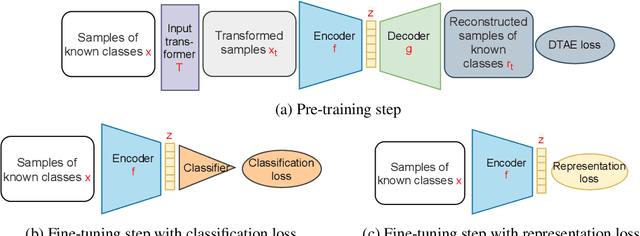


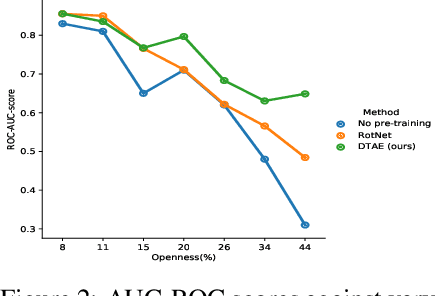
Abstract:The objective of Open set recognition (OSR) is to learn a classifier that can reject the unknown samples while classifying the known classes accurately. In this paper, we propose a self-supervision method, Detransformation Autoencoder (DTAE), for the OSR problem. This proposed method engages in learning representations that are invariant to the transformations of the input data. Experiments on several standard image datasets indicate that the pre-training process significantly improves the model performance in the OSR tasks. Meanwhile, our proposed self-supervision method achieves significant gains in detecting the unknown class and classifying the known classes. Moreover, our analysis indicates that DTAE can yield representations that contain more target class information and less transformation information than RotNet.
MMF: A loss extension for feature learning in open set recognition
Jun 26, 2020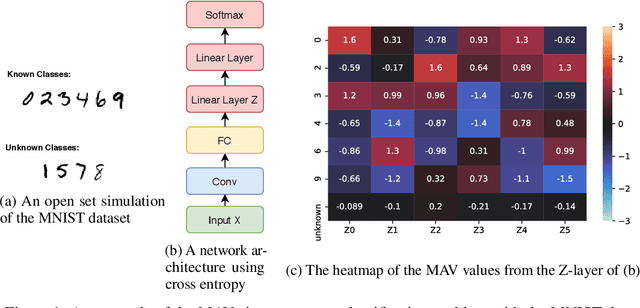

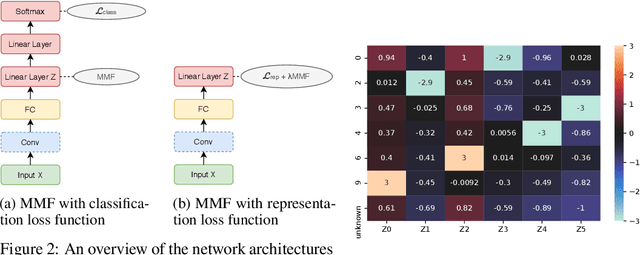

Abstract:Open set recognition (OSR) is the problem of classifying the known classes, meanwhile identifying the unknown classes when the collected samples cannot exhaust all the classes. There are many applications for the OSR problem. For instance, the frequently emerged new malware classes require a system that can classify the known classes and identify the unknown malware classes. In this paper, we propose an add-on extension for loss functions in neural networks to address the OSR problem. Our loss extension leverages the neural network to find polar representations for the known classes so that the representations of the known and the unknown classes become more effectively separable. Our contributions include: First, we introduce an extension that can be incorporated into different loss functions to find more discriminative representations. Second, we show that the proposed extension can significantly improve the performances of two different types of loss functions on datasets from two different domains. Third, we show that with the proposed extension, one loss function outperforms the others in terms of training time and model accuracy.
Deep Learning and Open Set Malware Classification: A Survey
Apr 08, 2020



Abstract:As the Internet is growing rapidly these years, the variant of malicious software, which often referred to as malware, has become one of the major and serious threats to Internet users. The dramatic increase of malware has led to a research area of not only using cutting edge machine learning techniques classify malware into their known families, moreover, recognize the unknown ones, which can be related to Open Set Recognition (OSR) problem in machine learning. Recent machine learning works have shed light on Open Set Recognition (OSR) from different scenarios. Under the situation of missing unknown training samples, the OSR system should not only correctly classify the known classes, but also recognize the unknown class. This survey provides an overview of different deep learning techniques, a discussion of OSR and graph representation solutions and an introduction of malware classification systems.
 Add to Chrome
Add to Chrome Add to Firefox
Add to Firefox Add to Edge
Add to Edge